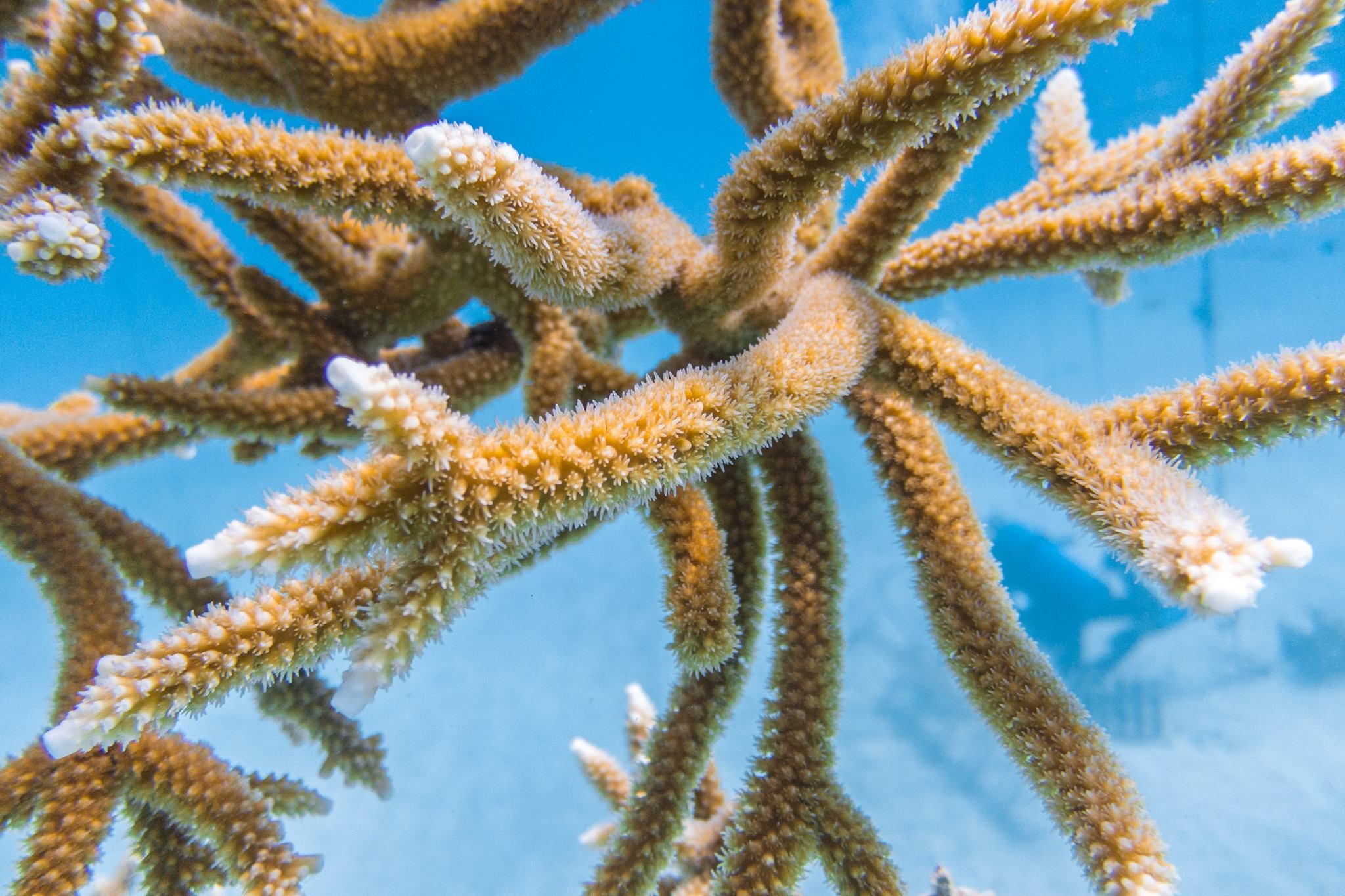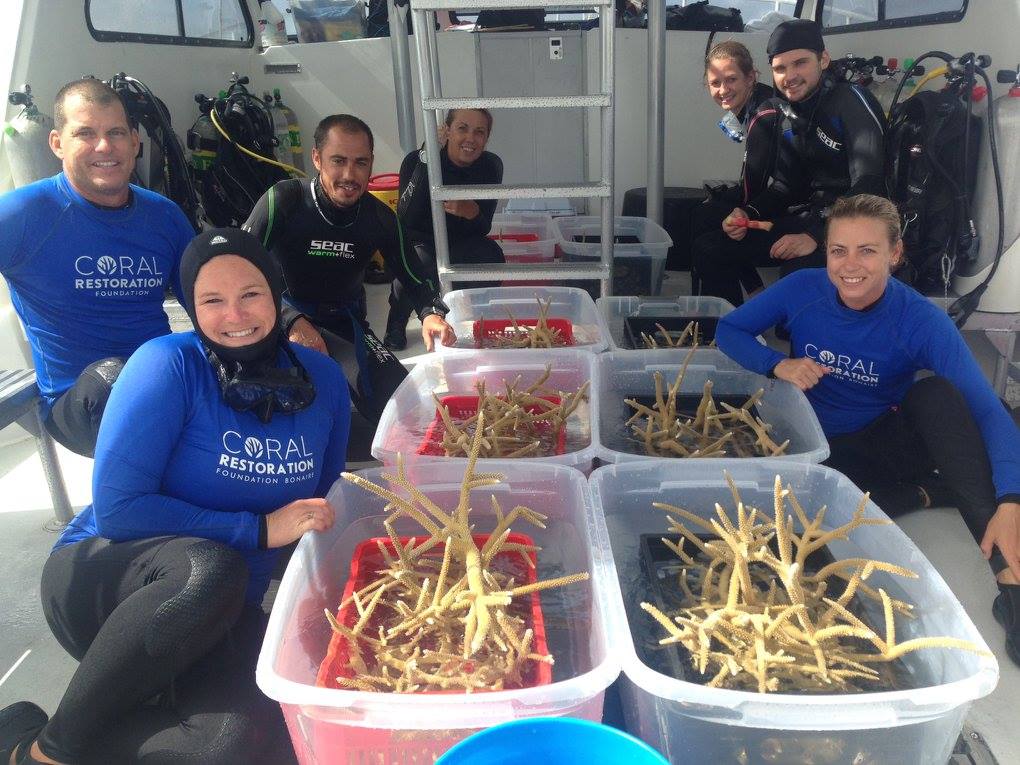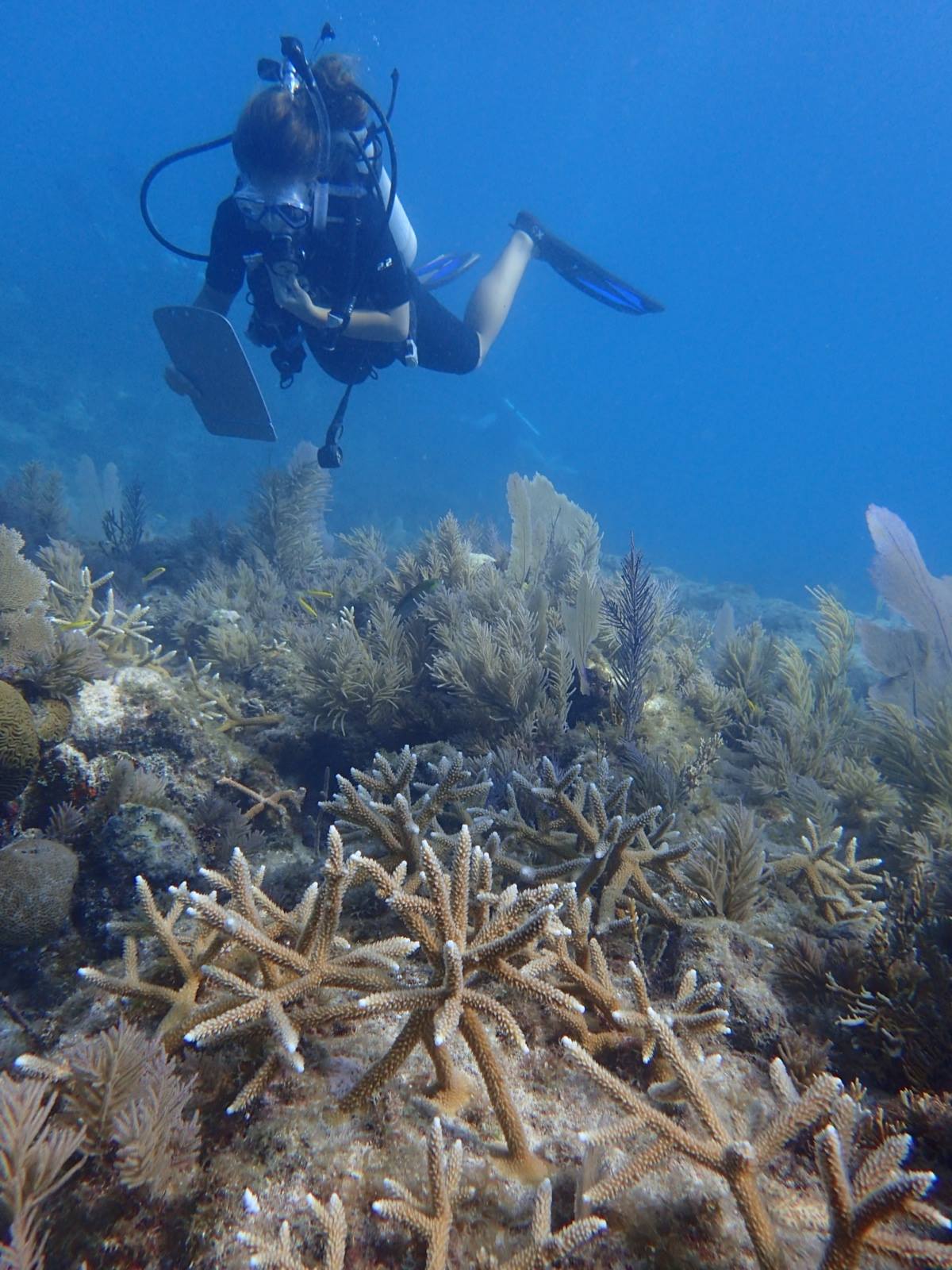To help ring in World Oceans Day, the Coral Restoration Foundation hosted their second annual reef restoration event, CORALPALOOZA. The international event took place on June 4th spanning 11 reefs in South Florida, and the Caribbean Islands of Bonaire and Curaçao.
Over 200 divers from volunteers to partners and to Coral Restoration Foundation team members participated in the successful event, planting a total of 1865 fragments of coral. Divers also conducted routine maintenance in offshore coral tree nurseries and collected valuable citizen scientist data of the growth and mortality of corals at multiple reefs.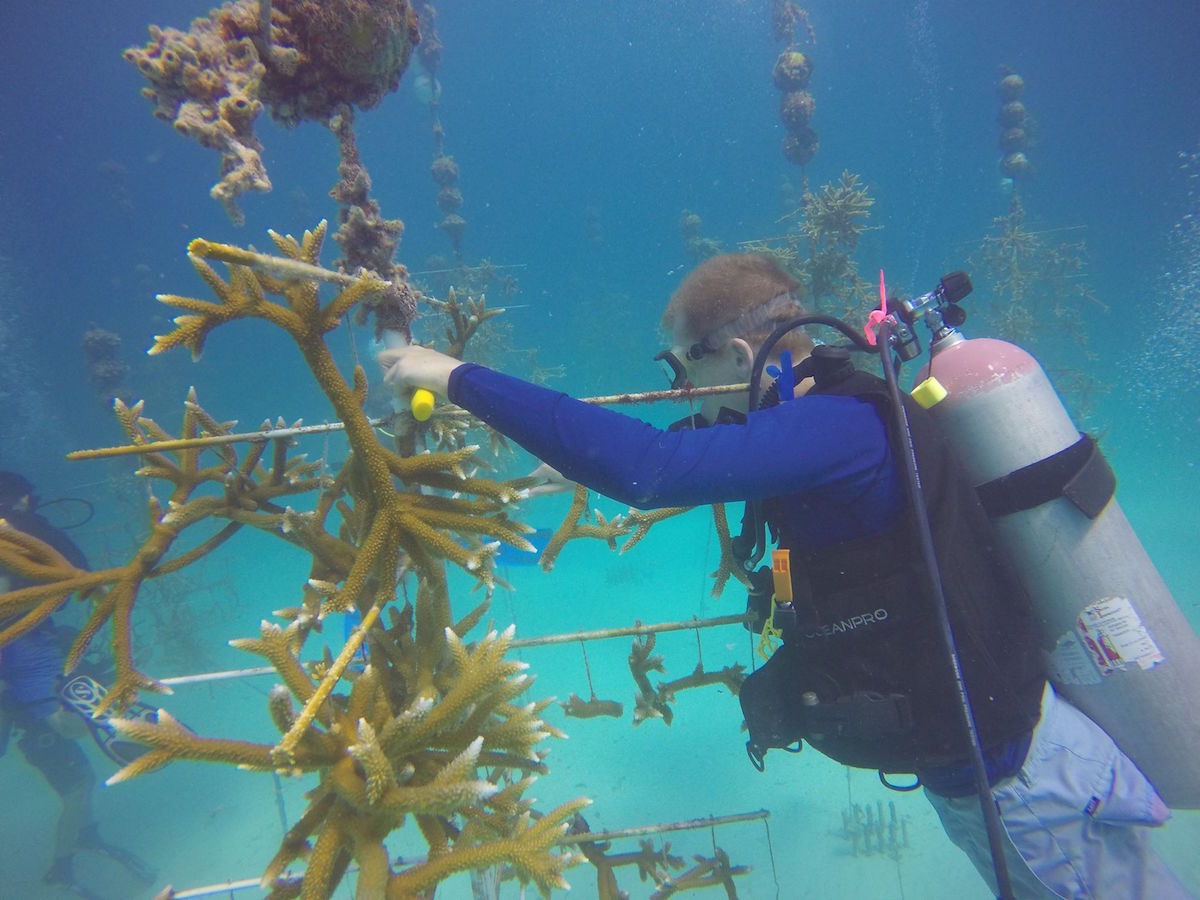
How Restoration Works
The Coral Restoration Foundation has developed an innovative technique for growing and propagating corals in particular, the vulnerable staghorn coral (Acropora cervicornis). Their nursery technique involves growing corals from the branches of suspended coral ‘tree’ nurseries made of interlocking PVC pipes. This technique allows for plenty of flow reaching the corals to remove sediments and brings the fragments closer to the surface where more light is available for photosynthesis.
The corals are left to grow on the trees for 6-12 months depending on conditions until they are large enough to be outplanted to the reef. The Coral Restoration Foundation considers their corals “reef-ready” when the coral fragments are approximately a foot long, around the size of a dinner plate.
Once the corals are ready they are harvested from the trees and transported by boat to the reef. The team chooses a suitable habitat to become the new restoration site and then fixes the corals to the reef. They use an all natural epoxy to be certain the corals have a firm hold fast on the reef, and the all natural ensure they are not putting any harmful or unnatural products into the oceans.
This video from a Coralpalooza event in Curaçao shows how the restoration team first need to clear the rocks of algae before securing the fragmented coral branches. The team then assess the best way to attach the coral to the rock where it will have enough points of contact to keep a firm hold.
As the corals begin to grow the polyps will begin by spreading outwards and creating a strong base. Once the coral fragments are established they will begin growing upwards and outwards creating small branchlets at their axial tips the largest coralite at the tip of each branch.
Staghorn coral (A. cervicornis) is an important stony coral which adds three-dimensional complexity to the reef and provides critical habitats for juvenile fish and other marine life. The Coral Restoration Foundation focuses on restoring this once abundant coral, and this year’s Coralpalooza event was successfully in planting a total of 1,755 Staghorn corals.
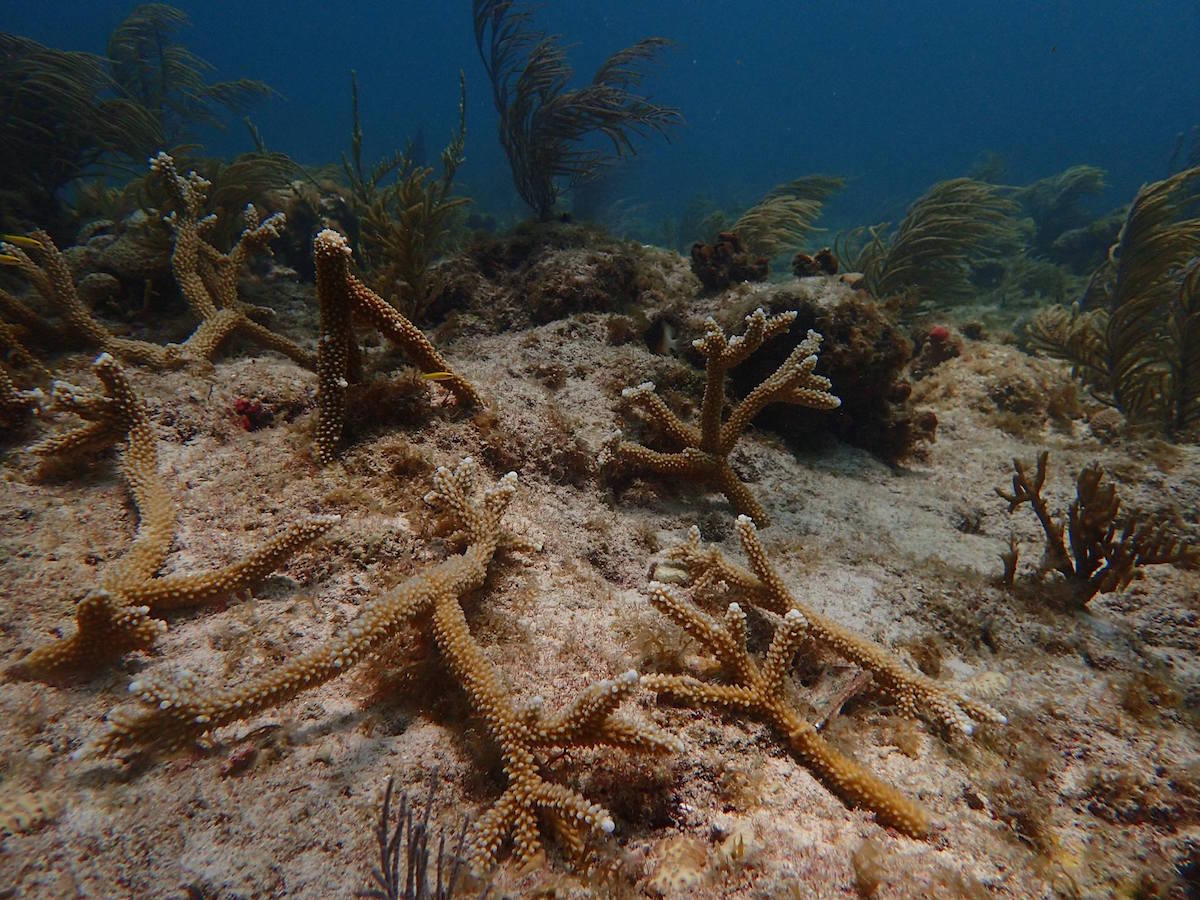
Coralpalooza Bonaire
While the restoration teams in Florida and Curaçao were focused on transplanting corals to rocky degraded reef sites, the team in Bonaire were busy attaching corals to custom built frames. The small square frames are located in a shallow sandy area which has plenty of light for growing corals.
Attaching corals on these structures allows for the transplantation of corals on unstable bottoms (rubble or sandy areas) and keeps the corals, initially small, relatively far from the bottom and less affected by predators. In a few years, the newly attached coral fragments will eventually reach the bottom when they will be strong enough to withstand predation.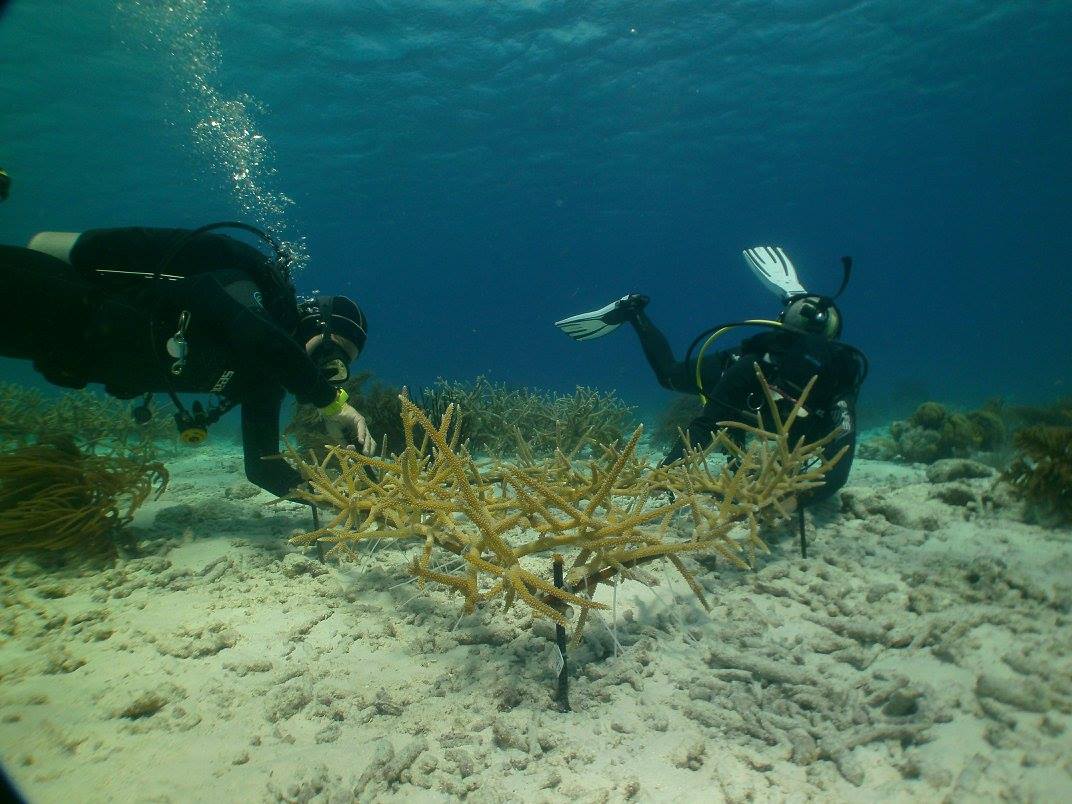
Coralpalooza Bonaire said that had thirty-five volunteers from seven different countries, with 2 morning and 2 afternoon boats, dedicated to Klein Bonaire nursery and the Restoration Sites Jeff Davis and Tori’s Reef. The team was able to transplant 300 corals (contributing to the total of 1865) and were able to do a massive nursery clean up.
After first learning of the Coralpalooza event one thing which really warmed our coral loving heart was the widespread collaboration that went into producing this event. From Florida to the Caribbean, dive centers, universities, NGO’s, divers and volunteers all worked together to make this second annual event a splashing success. Congratulation to everyone involved!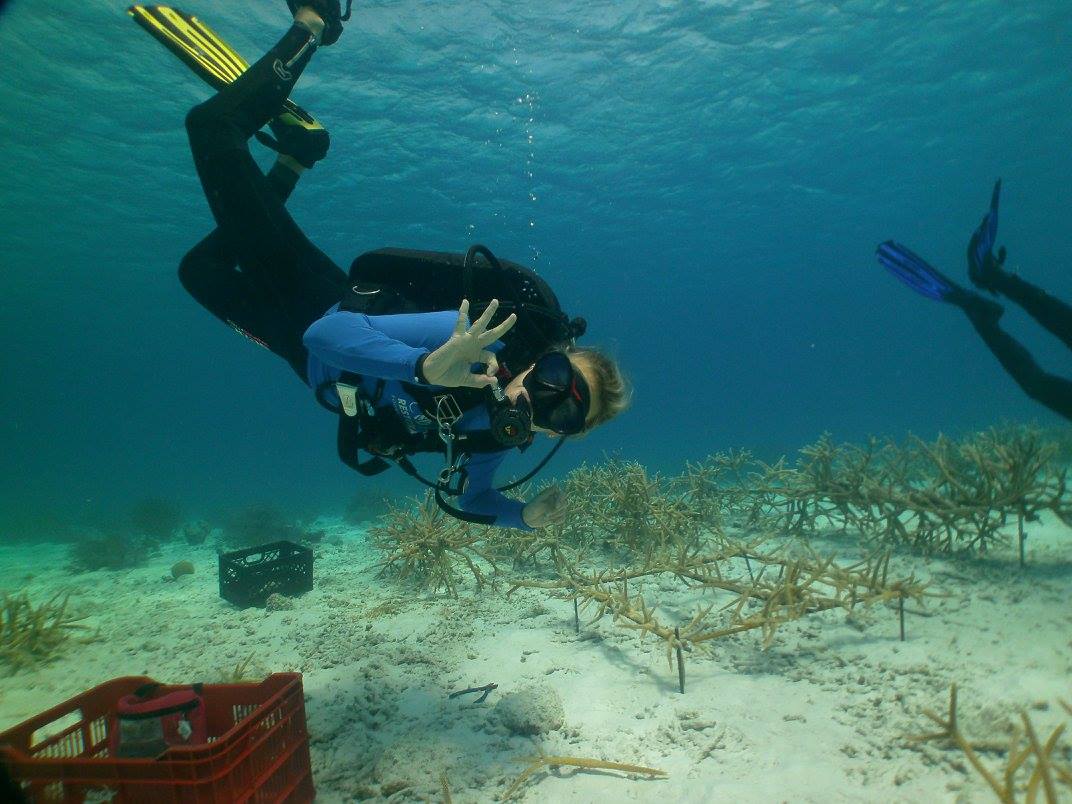
Thank you from Bonaire
The Coral Restoration team from Bonaire would like to give a special thanks to the amazing Jr. Rangers for showing great dive skills and a great energy for our reef future! THANK YOU Coral Restoration Foundation for inviting us to join the effort and lastly THANK YOU to Harbour Village, Buddy Dive and Wanna Dive staff for assisting and making this event possible.
Thank you from Curaçao
Wow! What a fantastic day, and such a good way to celebrate Ocean’s Day.
In the morning we had a group of students from the International School of Curaçao and we outplanted 110 corals. In the afternoon, another group of volunteers and dive professionals came to outplant another 110 corals. In total, we had 35 divers and 220 corals were planted at Ocean Encounters house reef, in front of Lions Dive & Beach Resort – Curaçao. Thanks to everyone, ISC, Stamey’s, Matzuk’s, Ocean Encounters staff, Evento Curacao and Atlantis Diving!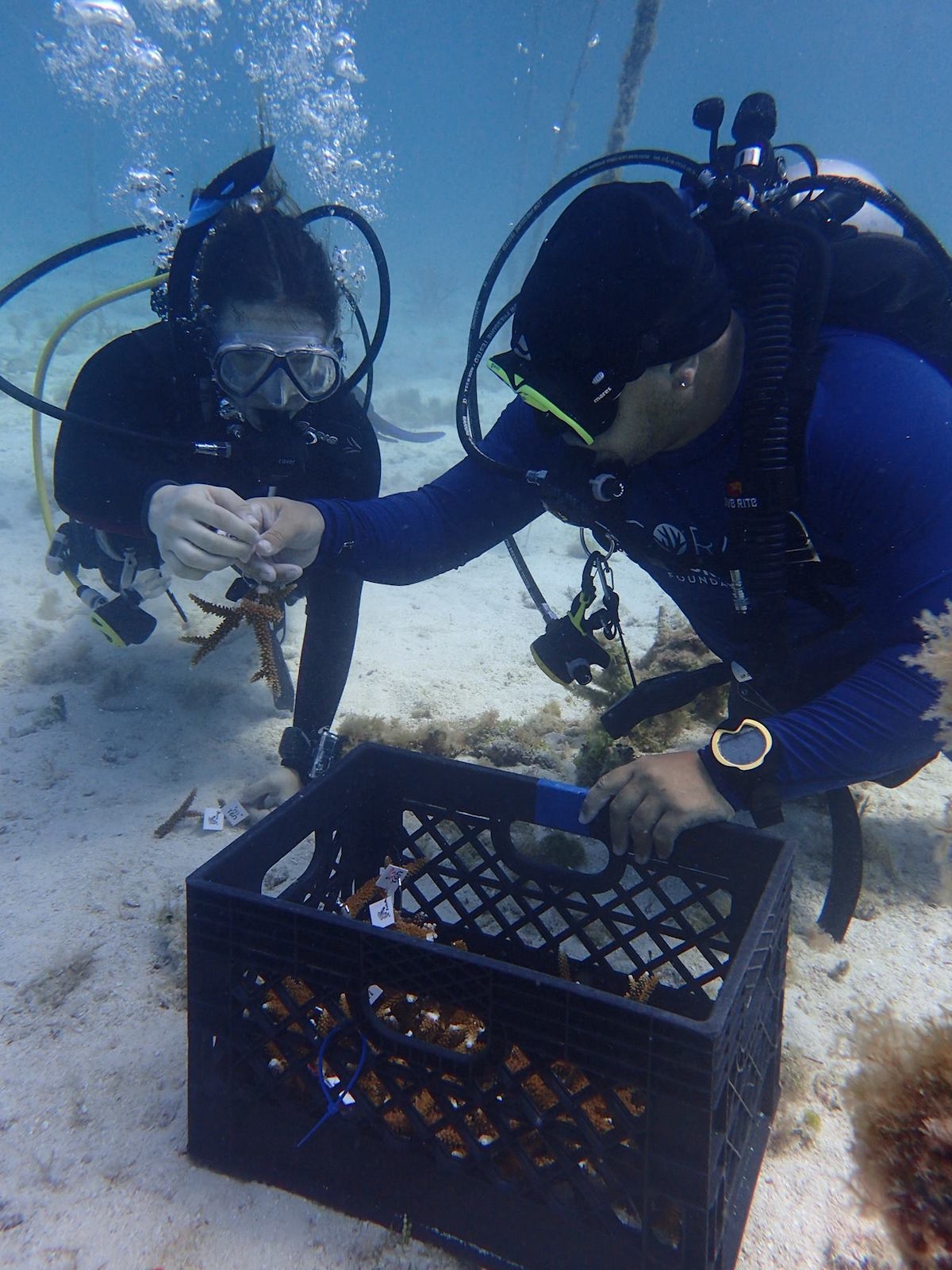
Thank you from Rescue a Reef
Rescue A Reef program teamed with DiveBar and was able to outplant 100 staghorn coral colonies to a reef in need off of the Miami shoreline. Many thanks to the Coral Restoration Foundation for hosting the event, as well as to Nova Southeastern University – Coral Nursery Initiative, Mote Marine Lab Center for Tropical Research and Diver’s Paradise for partnering with us in our efforts. Bravo to everyone involved!
Thank you from Nova Southeastern University
What an amazing day we had for Coralpalooza 2016! We outplanted 315 staghorn corals! We couldn’t have done it without our awesome volunteer divers and the generosity of Pompano Dive Center, Odyssey Charters and Dixie Divers. Thank you to all that helped with the day, we had so much fun restoring our reefs with you and hope to do it again soon! More pictures and videos of the day to come soon.
Thank you from the Coral Restoration Foundation
Coral Restoration Foundation hopes events like Coralpalooza will bring awareness to the importance of restoration, preservation, and conservation for our reefs and the world’s oceans. This event is made possible with the support of volunteers and partners including:
University of Miami Rescue A Reef
Nova Southeastern University Coral Nursery Initiative
Coral Restoration Foundation Bonaire
Coral Restoration Foundation Curacao
To donate or learn more about the Coral Restoration Foundation you can visit their website here.
